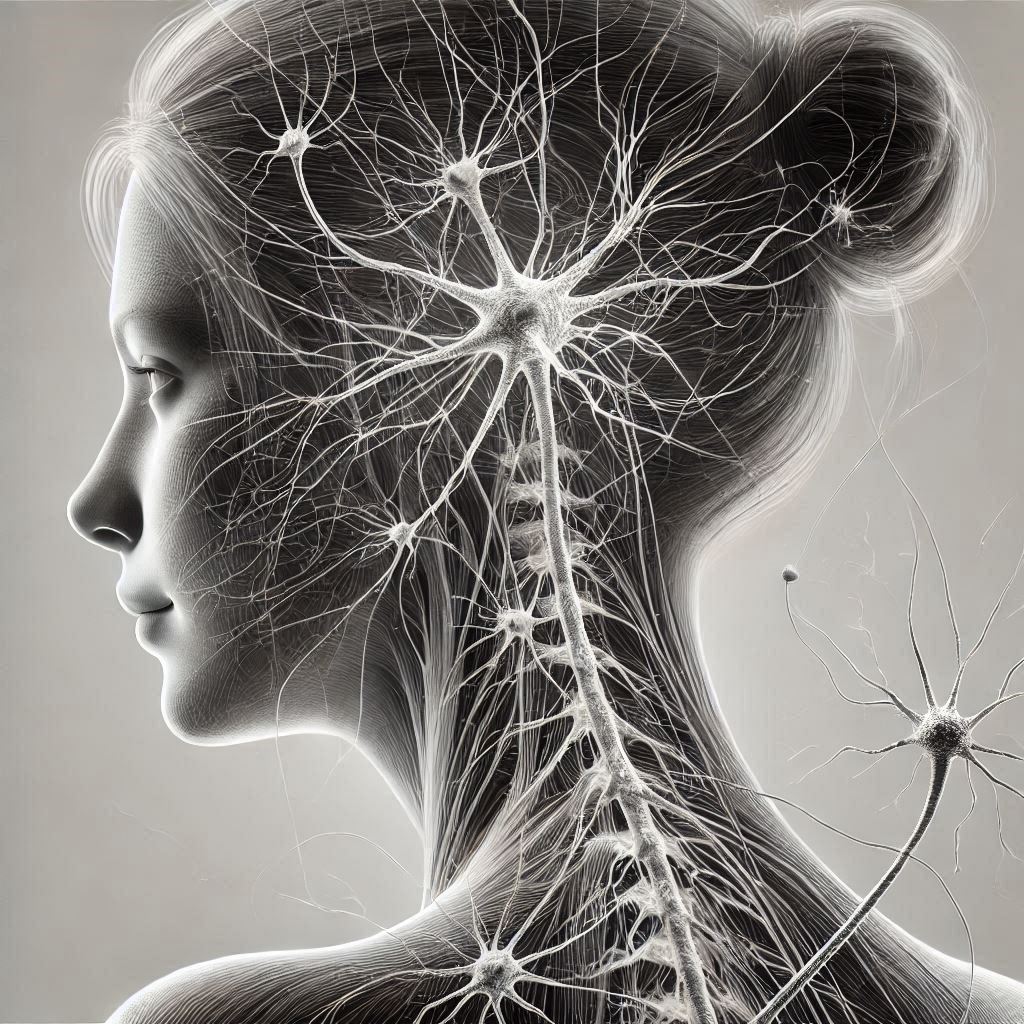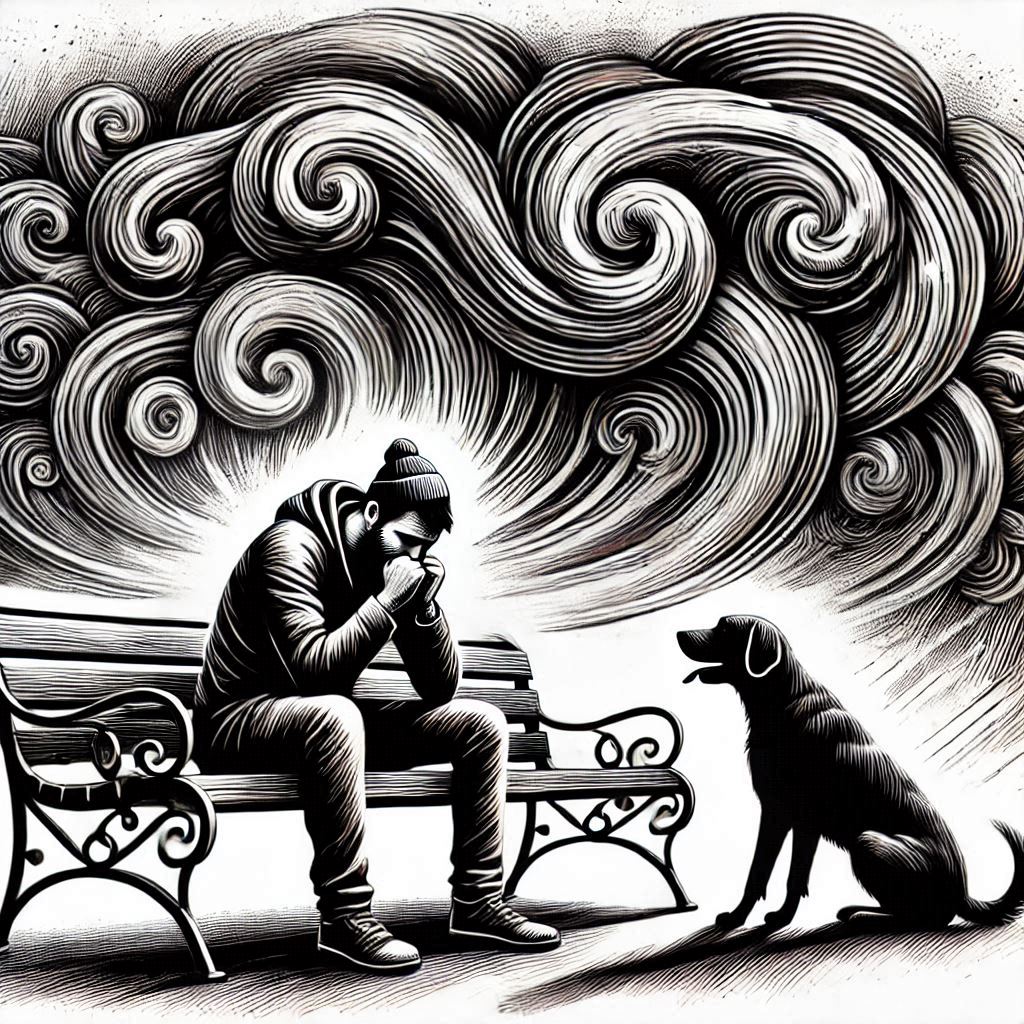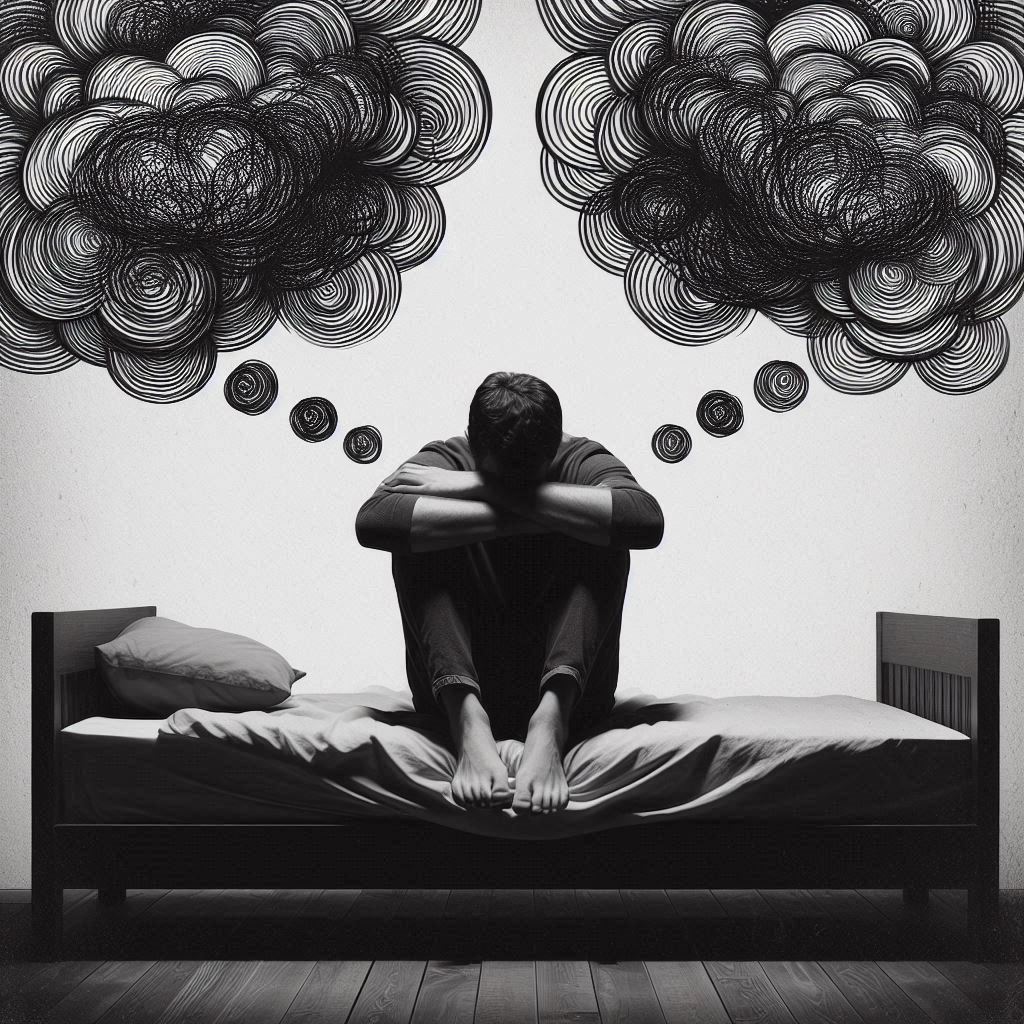Have you ever felt an overwhelming sense of fear wash over you, seemingly out of nowhere, leaving you breathless and your heart pounding?
What you might’ve experienced is a mini panic attack. These brief but intense episodes can hit you suddenly, making you feel like you’re on the brink without any real danger in sight. While they might not always seem to have a clear trigger, understanding them can be a big step in managing the stress and anxiety they bring. We’re diving into what mini panic attacks are, their symptoms, and how you can cope with these fleeting yet powerful moments of panic. Let’s get into it and bring some calm to the chaos.
What Are Mini Panic Attacks?
Mini panic attacks are short bursts of intense fear or discomfort that seem to come out of nowhere. Unlike full-blown panic attacks, which can last for 20 to 30 minutes or more, mini panic attacks typically pass within a few minutes. Even though they are brief, they can be incredibly distressing and impactful on your daily life.
Characteristics of Mini Panic Attacks
A mini panic attack shares many symptoms with a full-blown panic attack but is typically shorter in duration. Here are some of the key characteristics:
- Duration: Mini panic attacks usually last only a few minutes, making them less disruptive than longer attacks but still quite distressing.
- Symptoms: Common symptoms include a rapid heart rate, shortness of breath, dizziness, and a sense of impending doom. You might also experience sweating, trembling, nausea, or a feeling of unreality.
- Intensity: Despite their short duration, the intensity of these symptoms can make you feel like you’re losing control or even having a heart attack.
Imagine being suddenly hit by an overwhelming wave of fear, your heart pounding and your breath escaping you. It’s like standing in front of a tidal wave, knowing it’s going to hit but powerless to stop it.
Frequency and Triggers
The frequency of mini panic attacks can vary widely from person to person. Some people might experience them sporadically, while others could have them more frequently.
Common triggers include:
- Stress: High stress levels can be a major trigger. This can be from work, school, or personal issues.
- Caffeine: Yes, your morning coffee might be a culprit. Caffeine can stimulate your nervous system and lead to anxiety symptoms.
- Lack of Sleep: Not getting enough rest can increase your overall anxiety levels and trigger mini panic attacks.
- Physical Symptoms: Sometimes, feeling physically unwell or experiencing certain bodily sensations can trigger an attack.
Have you noticed a connection between certain situations and your mini panic attacks? Keeping a journal to track when they occur might help you spot patterns and triggers.
Remember, while mini panic attacks can be frightening, understanding them is the first step in managing them. By identifying your triggers and symptoms, you can take steps to reduce their frequency and impact on your life.
Signs and Symptoms of Mini Panic Attacks
Experiencing a mini panic attack can be an incredibly overwhelming and confusing experience. These episodes may appear suddenly and often without any apparent reason, making them even more distressing. Knowing the signs and symptoms can help you recognize when you’re experiencing a mini panic attack and take steps to manage it.
Physical Symptoms
Mini panic attacks can manifest through various physical symptoms that can often be mistaken for other health issues. Here are some common physical signs to watch for:
- Rapid Heartbeat: During a mini panic attack, you might feel your heart racing or pounding in your chest. This can be quite alarming, feeling similar to how you might after intense exercise, even if you haven’t been physically active.
- Sweating: Your body may respond to the sudden rush of adrenaline by sweating excessively, even if you’re in a cool environment.
- Shortness of Breath: Struggling to breathe or feeling like you can’t get enough air is a common symptom. It might feel like there’s a weight on your chest, making it hard to breathe deeply.
- Trembling or Shaking: You may notice your hands or other parts of your body trembling or shaking uncontrollably.
- Feeling Faint or Dizzy: Many people experience lightheadedness or dizziness during a mini panic attack, sometimes leading to a fear of fainting.
Recognizing these physical signs early can help you take steps to calm your body and mind before the panic attack escalates.
Emotional and Psychological Symptoms
Alongside physical symptoms, mini panic attacks also bring a host of emotional and psychological challenges that can be just as debilitating. Here are some key emotional and psychological symptoms:
- Feelings of Dread: A sudden, intense feeling of fear or impending doom is common. It’s like the ground beneath you is giving way, even if you know logically that everything is okay.
- Fear of Losing Control: Many individuals fear they are going crazy or losing control over their thoughts and actions. This fear can compound the panic and make it feel even more terrifying.
- Disconnection from Reality: You may feel detached from your surroundings or yourself, almost as if you’re observing everything from outside your body. This feeling, known as derealization or depersonalization, can be quite unsettling.
- Anticipatory Anxiety: After experiencing a mini panic attack, it’s common to worry about the possibility of having another one. This ongoing anxiety can create a vicious cycle, increasing the likelihood of future attacks.
Understanding these emotional and psychological symptoms can help you recognize that what you’re experiencing is a mini panic attack and not something more severe. By identifying these symptoms, you can take steps to manage and reduce their impact on your daily life.
Causes and Risk Factors
Understanding the causes and risk factors behind mini panic attacks can help bring clarity and ease to a troubling experience. These factors can be broadly categorized under biological influences and environmental or lifestyle triggers.
Biological Factors
Genetics and brain chemistry play significant roles in determining whether someone might experience mini panic attacks. If you have a family history of anxiety disorders, you might be more susceptible to experiencing these episodes. Think of it like inheriting traits such as eye color or height; some of it is simply in your genes.
- Genetic Predisposition: If your parents or siblings have struggled with anxiety or panic disorders, there’s a higher chance you might too. It’s a bit like inheriting a family trait, only instead of curly hair, it’s a tendency toward anxious reactions.
- Brain Chemistry: The balance of chemicals in your brain, like serotonin and norepinephrine, can affect how you handle stress and fear. When these chemicals are out of sync, it can make you more likely to experience anxiety and panic.
Research has shown that certain areas of the brain, particularly those involved in the “fight or flight” response, can be more active in people who suffer from panic attacks. This heightened sensitivity can trigger a panic response even when there’s no real danger.
Environmental and Lifestyle Factors
Apart from biological factors, your environment and lifestyle choices can play an enormous role in triggering mini panic attacks. Stress, trauma, and the way you live your life day to day can either calm your nerves or send them into overdrive. Let’s break it down:
- High Stress Levels: Constant stress from work, school, or personal relationships can wear down your mental defenses. Over time, this can lead to heightened anxiety and panic. Imagine a pressure cooker; if it’s always under high pressure, it’s more likely to blow its top.
- Trauma: Past traumatic experiences, whether physical or emotional, can leave lasting scars on your mental health. These experiences can trigger panic attacks, especially if something reminds you—even subconsciously—of the trauma.
- Unhealthy Lifestyle Choices:
- Caffeine and Stimulants: Your daily coffee or energy drink might be giving you more than just a boost. Caffeine can stimulate your nervous system, making it easier for anxiety to tip over into panic.
- Lack of Sleep: Not getting enough rest can wreak havoc on your mental and emotional balance. When you’re sleep-deprived, your body is more on edge, which can trigger mini panic attacks.
- Sedentary Lifestyle: Regular physical activity helps burn off excess stress hormones. If you’re not moving enough, those stress hormones can accumulate and make it easier for panic attacks to occur.
Remember, while you can’t always control your genetics or past traumas, being mindful of your lifestyle choices and stress levels can make a significant difference. Making small changes, like cutting back on caffeine or ensuring you get enough sleep, can help manage and even reduce the frequency of mini panic attacks.
Managing Mini Panic Attacks
Dealing with mini panic attacks can be challenging, but having some strategies up your sleeve can make all the difference. Whether you’re looking for immediate relief or long-term solutions, understanding how to manage these episodes can help you regain control when you need it most.
Immediate Coping Techniques
When a mini panic attack strikes, having quick techniques to ground yourself can be incredibly effective. Here are some immediate coping techniques that can help:
Deep Breathing
Taking control of your breath can calm your body’s panic response. Focus on taking slow, deep breaths. Try the 4-4-4 method:
- Inhale: Breathe in slowly for 4 seconds.
- Hold: Hold your breath for 4 seconds.
- Exhale: Breathe out slowly for 4 seconds.
This simple practice can reduce hyperventilation and help slow your heart rate.
Grounding Exercises
Grounding exercises bring your focus back to the present moment. One effective technique is the 5-4-3-2-1 method:
- 5 Things You Can See: Look around and find five things you can see. Describe them in detail.
- 4 Things You Can Touch: Identify four things you can touch. Note their textures.
- 3 Things You Can Hear: Listen for three distinct sounds.
- 2 Things You Can Smell: Find two smells around you and describe them.
- 1 Thing You Can Taste: Concentrate on one thing you can taste, even if it’s just the aftertaste of your last meal.
By engaging your senses, you can bring your mind away from the panic and back to the world around you.
Progressive Muscle Relaxation
Tense and then relax different muscle groups in your body, starting from your toes up to your head. This can help reduce the physical tension associated with panic.
Long-term Strategies
While immediate techniques are great for helping in the moment, developing long-term strategies is essential for managing mini panic attacks over time. These can include therapy, lifestyle changes, and medication options.
Therapy
Talking to a therapist can provide structured ways to manage anxiety. Cognitive-behavioral therapy (CBT) is particularly useful for panic attacks. CBT helps you:
- Understand Triggers: Identify what sets off your mini panic attacks.
- Challenge Negative Thoughts: Learn to challenge and change unhelpful thoughts that contribute to your panic.
- Develop New Coping Skills: Build a toolkit of strategies to manage panic when it strikes.
Lifestyle Changes
Adjusting certain aspects of your lifestyle can have a significant impact on reducing the frequency and severity of mini panic attacks. Here are some changes to consider:
- Regular Exercise: Physical activity releases endorphins, which are natural stress relievers. Aim for at least 30 minutes of exercise most days.
- Healthy Diet: Eating a balanced diet can stabilize your blood sugar levels and improve your overall mood.
- Sleep Hygiene: Prioritize getting enough sleep. Create a calming bedtime routine to help you unwind.
- Limit Caffeine and Alcohol: Both can exacerbate anxiety and panic symptoms.
Medication Options
Sometimes, medication can be an important part of managing panic attacks. Always consult with a healthcare provider to find what works best for you. Common options include:
- SSRIs (Selective Serotonin Reuptake Inhibitors): Often prescribed for long-term management of anxiety.
- Benzodiazepines: These can provide quick relief but are typically used for short-term management due to the risk of dependence.
- Beta-blockers: Useful for controlling physical symptoms like rapid heart rate and trembling.
Implementing a combination of these strategies can help you feel more in control and reduce the impact of mini panic attacks on your life. Remember, managing panic is a journey, and finding what works best for you is key.
When to Seek Professional Help
If you’re dealing with mini panic attacks, you might wonder when it’s time to call in a professional. It can be tough to decide if what you’re experiencing needs more than just self-help strategies. Let’s look at some red flags and the types of help available to make that decision clearer.
Identifying the Need for Professional Intervention
It’s normal to feel anxious sometimes, but how do you know if you need professional help? Here are some clear signs that it’s time to reach out:
- Frequency of Attacks: If mini panic attacks are happening more often, it’s a clue that your anxiety might be getting harder to manage on your own.
- Interference with Daily Life: Are these attacks stopping you from doing everyday things? If you’re avoiding activities, places, or even people because you’re scared of having an attack, it’s a significant sign.
- Physical Symptoms: Persistent physical symptoms like chest pain, dizziness, or trouble breathing can be worrying and deserve medical attention to rule out other conditions.
- Intense Fear of Future Attacks: If you’re spending lots of time worrying about the next attack, this anticipatory anxiety can make life feel like walking on eggshells.
- Strained Relationships: Anxiety can strain relationships. If your panic attacks are causing arguments or misunderstandings with friends, family, or colleagues, it might be time to get help.
Ignoring these signs is like ignoring a check engine light on your car—it might be okay for a while, but eventually, something might break down.
Types of Professional Help Available
Finding the right kind of professional help can make a world of difference. Here’s a look at some types of mental health professionals and treatments available:
Mental Health Professionals
- Therapists and Counselors: These professionals can help you understand and manage your anxiety. Cognitive Behavioral Therapy (CBT) is a common and effective approach.
- Psychiatrists: These are doctors who specialize in mental health and can prescribe medication if it’s needed. Medications like antidepressants or anti-anxiety meds might be part of your treatment plan.
- General Practitioners (GPs): Your regular doctor can be a starting point. They can help diagnose your condition and refer you to a specialist if necessary.
- Psychologists: Specializing in diagnosing and treating mental health issues, psychologists typically provide therapy but don’t prescribe medication.
Treatment Options
- Psychotherapy: This includes various forms of therapy, with CBT being one of the most effective for panic disorders. It helps you change negative thinking patterns and develop coping strategies.
- Medication: Several medications can help manage symptoms, such as:
- Selective Serotonin Reuptake Inhibitors (SSRIs): Often prescribed for long-term anxiety management.
- Benzodiazepines: These provide quick relief but are generally used for short-term management due to the risk of dependency.
- Beta-blockers: These can help manage physical symptoms like a racing heart.
- Group Therapy and Support Groups: Connecting with others who understand what you’re going through can provide emotional support and practical advice.
- Holistic Therapies: Mindfulness, meditation, and yoga can also play a part in managing anxiety and reducing the frequency of mini panic attacks.
Remember, asking for help isn’t a sign of weakness—it’s a step towards taking control of your life again. Think of it like hiring a personal trainer for your mind; everyone can use some guidance and support to reach their best mental health.
Conclusion
Understanding and managing mini panic attacks is crucial for maintaining a balanced life. These brief episodes, while intense, can be navigated with the right strategies and mindset.
Self-care is non-negotiable. Pay attention to your body’s needs, practice relaxation techniques, and don’t hesitate to seek professional help if you’re feeling overwhelmed.
Remember, you’re not alone in this journey. By addressing your fears and getting the support you need, you can take control and lead a fulfilling life. Taking care of your mental health is a sign of strength.








